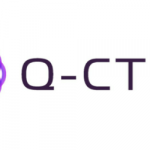AMBER Researchers Provide New Insights into Decoherence of Qubits
(HPCWire) Researchers from AMBER, the SFI Research Centre for Advanced Materials and BioEngineering Research, the School of Physics and the CRANN Institute, at Trinity College Dublin, have utilized their model and simulations of the atomic world to give insight into decoherence.
One of the problems that has faced scientists since the dawn of quantum computing in the 1970’s is decoherance; by interacting with their surroundings, qubits do not behave as theorized. Put in terms of computing: if qubits store information based on being in both states simultaneously then decoherence means data will be lost.
Scientists at AMBER are now looking at the problem of decoherance using electronic structure calculations to provide an interpretation of the atom in line with experimental observations.
AMBER investigator Dr. Alessandro Lunghi explains: “So far we don’t fully understand the details of decoherence but one suggested source is that vibrations occur in the material. Through our research we have new insights on the nature of these molecular vibrations and can propose new strategies on how to mitigate their destructive role on spin quantum coherence”.
Working alongside experimental teams based in the UK and Italy, Dr. Lunghi and Prof. Stefano Sanvito conducted theoretical and modeling work. “What makes this research unique” Prof. Sanvito explains “was that the experimental teams were able to observe vibrations of molecular qubits for the first time, and our TCD team made it possible to understand the nature and the details of how the observed vibrations couple to spin”.



















